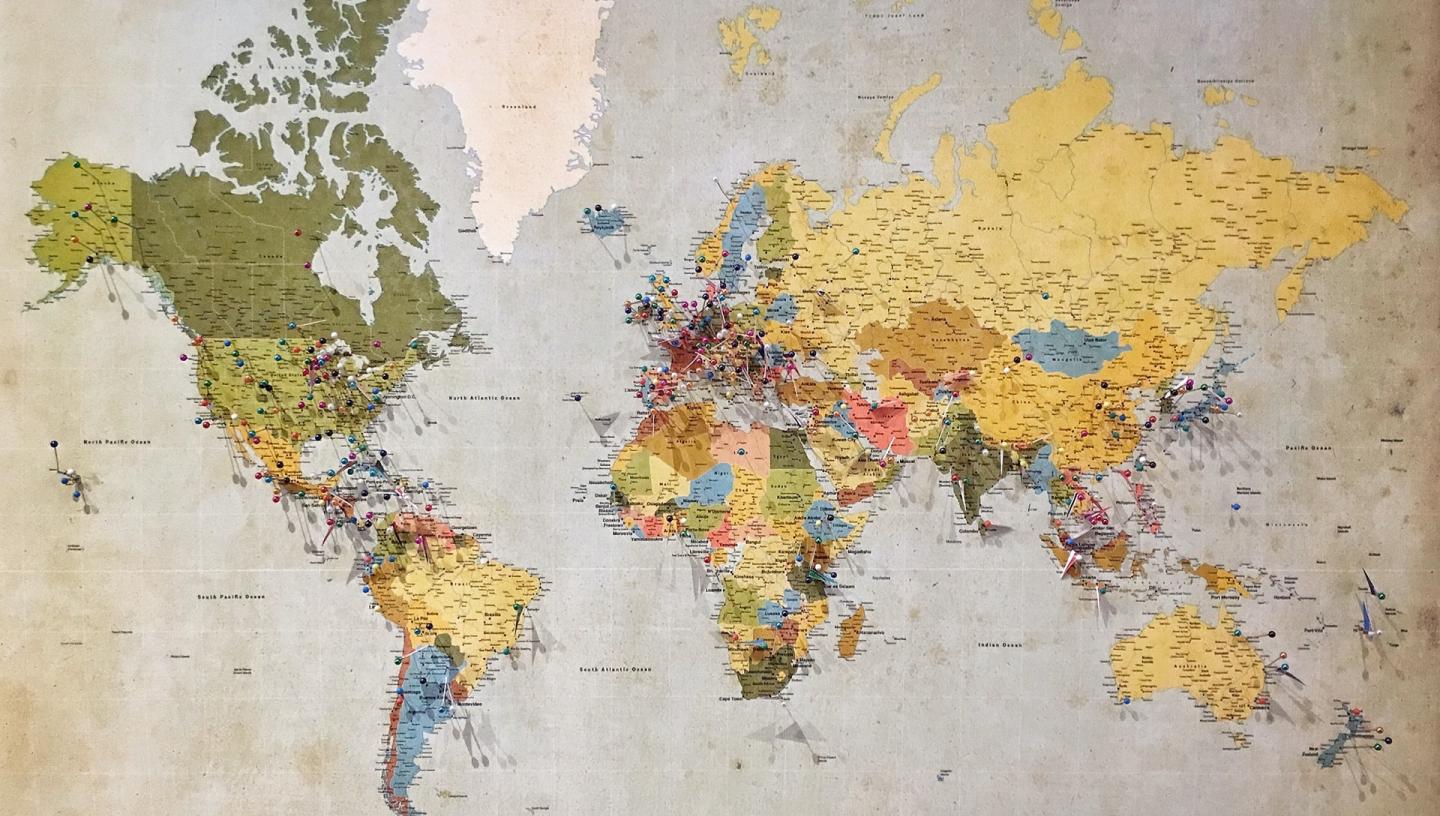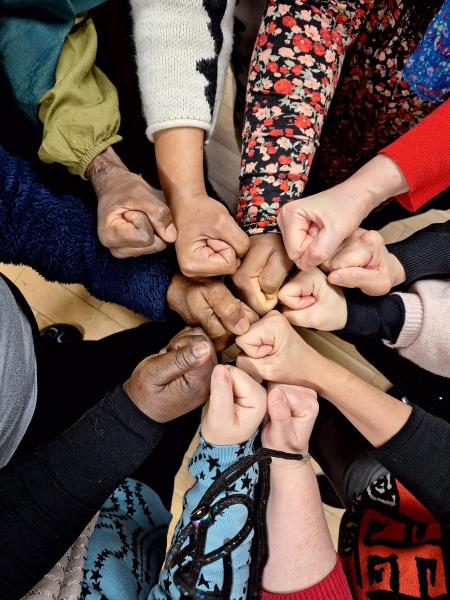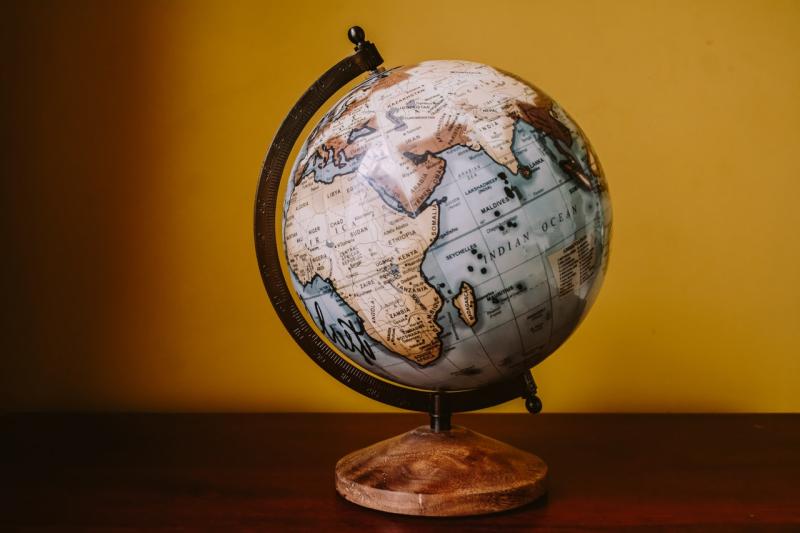
Migrants, refugees and asylum seekers – what's the difference? Find out more about the terminology of migration.
There are a lot of terms bandied around when people talk about migration.
Although breaking down terms might not seem important, it is increasingly recognised that language shapes our perception of reality. The words we use have a very real effect on how we think and act about migration.
Because migration is a politically-loaded topic, the words used to speak about it are also loaded.
They can take on different functions depending on who is saying them and how they are used.
We want to break down how some of these terms are used so that we can understand the purposes they are used for, and the various people who may benefit from using them.
What is a migrant?
A migrant is a person who moves: to the next town, or to a country on the other side of the world. Movement is at the heart of the term.
Because of its generality, this term is used across the political spectrum, assuming different connotations depending on who uses it and for what purpose.
Exponents on the far-right attach a negative connotation to this term and adopt it blindly: all people on the move are put in the same category, which fails to acknowledge the experience, history, and reasons for migrating. In doing so they try to delegitimise the movement of people and blur between economic and forced migration.
Economic migration
When used by the right the term 'migrant' can take on connotations of ‘economic migration’, which is when people move to make a better life for themselves or their families.
Framed in a different way, this can be used to imply ‘a person who wants to come here to take your job’ and so is viewed as threatening, invasive, often masculine, and voluntary.
‘Migrant’ or ‘economic migrant’ then becomes a catch-all term for anyone not from a place, who in turn become an easy scapegoat excluded from the political and social community.
On the other side of the political spectrum, for migration ‘activists’ migrant bodies sometimes become the battlefield in the rhetorical struggle between the right and the left.
Migrants become a proxy and a means to advance a political agenda – and risk being forgotten in favour of sexier, fresher causes and campaigns at the first turn of events.
Our organisation, Migration Collective, has chosen to use this term because it allows us to explore the full array of issues and experiences of migration and consider commonalities and differences that go beyond simply legal definitions.
Although it’s important to remember that legal definitions have a very real and unique impact on people’s experiences – such as the experience of going through a hostile asylum process – the narrowness of these terms can obscure many similarities.

In academia the term ‘migrant’ is sometimes used because it lets people think about the blurred boundaries between forced and voluntary migration, and ask such questions as:
- What issues in a country of origin push people to migrate?
- When does marginalisation and discrimination become so bad that it is a reason for seeking asylum?
- How does someone exercise choice even when being forced to flee?
The term migrant has become politically loaded just in the past few years. Migration has always existed, and movement is a fundamental aspect of the human experience.
While in some circumstances people choose to move, in others migration becomes the only means by which they can survive – often because of war, persecution or poverty, they engage in what is known as forced migration.
What is a refugee?
Refugees are among the groups of people who have been forced to be on the move. There is an almost universally accepted legal definition of who is a refugee, defined in the 1951 Geneva Convention which emerged out of the mass displacement caused by the Second World War.
A refugee is a person who:
Owing to a well-founded fear of being persecuted for reasons of race, religion, nationality, membership of a particular social group or political opinion, is outside the country of his or her nationality and is unable to or, owing to such fear, is unwilling to avail him- or herself of the protection of that country.
If a person fulfils this definition, then he or she should be recognised and protected as a refugee.
A person is not made a refugee by the state that protects them: rather it is part of this definition that the person is already a refugee and it is the state’s responsibility to recognise this.
Before they are granted the right to live and fully participate in a new society though, prospective refugees have to go through the often lengthy and daunting process of claiming asylum.
What is an asylum seeker?
Legally-speaking a person is an asylum seeker when they have claimed asylum in a country other than that of their nationality but haven’t yet received a decision on whether they will be granted refugee status.
This process can take years, during which people are waiting in limbo for a decision on their fate: while they are legally allowed to be in the new country, they often can’t work, study, travel or participate in a meaningful way in social and political life. Because of this, there is no such thing as an illegal asylum seeker.
The 1951 Geneva Convention, which the UK has signed, says that a person has a right to seek asylum.
This right protects their movement, even if it is not done through legal routes. Not all people who are forced to migrate can seek asylum and aspire to be granted refugee status.
Technically, large groups of people displaced by war and indiscriminate violence, people displaced by climate change, victims of trafficking and modern slavery, as well as people forced to move because of extreme poverty and systematic marginalisation are not recognised as refugees.
For them, there may be far fewer options to obtain visas to seek safety and settle in new countries. However, some people adopt a wider ‘non-legal’ definition of the term refugee to make it more inclusive of all those who have been forced to migrate.
This is partly to expose the narrowness of the definition of ‘refugee’ and so push for a widening of the definition of the term and the protection it offers.
What all these people share is humanity.
Legality
People can move from one definition to another depending on where they are in their journey – can move from internally displaced, to asylum seeker, to refugee. It’s a construction of the law that shapes people’s experience, but does not define it entirely.
During their journey, people might not be able to move under ‘legal categories’. This is why increasingly some people use the term illegal to describe people and their movement, but what it means in reality is that a person doesn’t hold a piece of paper that evidences a government’s willingness to allow them to move.
A person is never illegal. The problem is not with the person, but with the fact that the laws in place are not fit for purpose in a world where migration exists and has always existed.
The term illegal is being utilised by a ruling class in whose interest it is to pitch people against each other to prevent them from recognising their shared humanity and realising that they have more in common than what divides them.
We celebrate Refugee Week not only because it provides an opportunity to showcase the achievements and contributions of refugees to British society, but also because it gives an opportunity to have open conversations about the experiences of refugees and issues of forced displacement.
This is a guest blog by the Migration Collective, first published in June 2020

